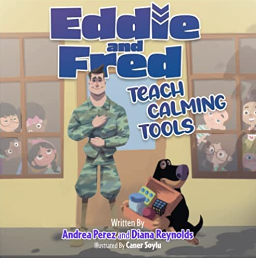Helping children develop emotional intelligence and effective coping mechanisms is crucial for their overall well-being. In this blog post, we will explore the importance of empowering children with emotion mastery and calming techniques. By teaching them how to manage their emotions and find inner calmness, we can equip them with essential skills that will benefit them throughout their lives.
Understanding Children’s Emotions
Understanding children’s emotions is the first step in guiding them towards emotional well-being. As caregivers, it’s important to recognize that children experience a wide range of emotions, including joy, anger, fear, and sadness. By understanding their emotions and their triggers, we can create a supportive environment that promotes healthy emotional development. It’s also helpful to be aware of age-appropriate emotional milestones to set realistic expectations.
Techniques for Teaching Emotion Management
Teaching children how to manage their emotions is an empowering process. Start by cultivating empathy and active listening skills. When children feel heard and understood, they are more likely to express their emotions openly. Encourage them to identify and label their emotions using tools like emotion charts or books. This helps them develop emotional vocabulary and increases their self-awareness.
Furthermore, teaching children self-regulation skills is vital. Guide them on recognizing their triggers and offer strategies for self-calming. Deep breathing exercises can be effective in promoting relaxation. Teach them to take slow, deep breaths, filling their belly and exhaling slowly. This technique helps them regain control when emotions are running high. Additionally, mindfulness activities like guided imagery or progressive muscle relaxation can help children focus their attention and find inner peace.
Calming Strategies for Children
In addition to teaching self-regulation, introducing calming strategies to children can be immensely beneficial. One popular technique is deep breathing, as mentioned earlier. Another effective strategy is creating a calm-down corner or space where children can retreat to when they need to regulate their emotions. This designated area can be stocked with sensory tools like fidget toys or sensory jars, which provide a soothing sensory experience.
It’s also important to encourage physical activities as a way to release pent-up energy and emotions. Taking a walk, dancing, or engaging in yoga can help children channel their emotions in a positive and constructive manner. Providing creative outlets, such as drawing or journaling, allows children to express themselves artistically and process their feelings.
Child Development FAQs:
Q: How can I help my child recognize and label their emotions?
A: Utilize emotion charts, books, or visual aids to help children identify and name their emotions. Encourage open conversations about their feelings and provide a safe space for them to express themselves.
Q: What can I do when my child becomes overwhelmed by their emotions?
A: Teach your child strategies for self-calming, such as taking a break, deep breathing, or redirecting their focus to a calming object or activity. Encourage them to find healthy ways to release emotions, such as through physical activities or creative outlets.
Q: How can I encourage my child to practice self-regulation?
A: Teach your child deep breathing exercises, encourage positive self-talk, and help them create a calm-down corner or space they can go to when they need time to regulate their emotions. Consistency and modeling these behaviors are key.
Q: Are there any recommended resources or books on this topic?
A: Yes, some recommended resources include “The Whole-Brain Child” by Daniel J. Siegel and Tina Payne Bryson, “Raising an Emotionally Intelligent Child” by John Gottman, and websites like childmind.org and zerotothree.org, which offer valuable information and resources on child development and emotional well-being.
Healthy Emotions Conclusion:
Empowering children with emotion mastery and calming techniques sets them on a path toward emotional well-being and resilience. By understanding their emotions, teaching them effective emotion management techniques, and providing calming strategies, we equip children with invaluable life skills.
As caregivers, parents, and educators, we have the power to shape how children navigate their emotions. By cultivating empathy, active listening, and self-regulation skills, we create a supportive environment where children feel safe to express themselves. The journey toward emotional intelligence may have its challenges, but the rewards are immeasurable.
Remember, teaching children how to manage their emotions is an ongoing process. Patience, consistency, and understanding are key. Each child is unique, and their progress will vary. Celebrate their achievements, no matter how small, and offer guidance and support when they stumble.
Together, let’s empower children to become emotionally resilient individuals who can navigate life’s ups and downs with confidence and grace. By investing in their emotional well-being today, we contribute to a brighter and more compassionate future.
So, let’s embark on this journey of empowering children with emotion mastery and calming techniques, knowing that we are making a positive impact on their lives—one emotion at a time.
Remember, you can always tailor and expand on the positive content provided to fit your specific style and target audience.
Introducing “Eddie and Fred: Teaching Calming Tools” – a captivating children’s book that takes young readers on an exciting adventure while empowering them with essential skills for managing their emotions. Through relatable characters and engaging storytelling, this book teaches children practical calming techniques and the power of self-regulation. With “Eddie and Fred,” children will develop lifelong tools for emotional well-being, allowing them to navigate challenges with confidence and find inner calmness. Available now, this book is a must-have resource for parents, caregivers, and educators seeking to support children in their emotional growth and resilience.




